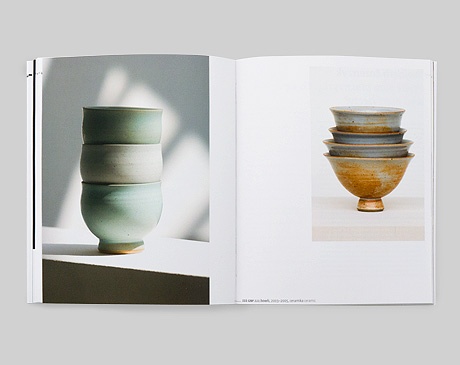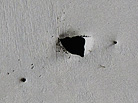‘Post-Gauguin’ — a collection of texts and works examining the subject of 'irresistible and compulsive imaging'

year of publication: 2011
size: 17 × 21 cm
volume: 128 pages
edition: 500 pieces
binding: softcover
reproductions in colour
languages: Polish/English
graphic design and typesetting: Katarzyna Goczoł, Magdalena Piwkowska
publisher: BWA Contemporary Art Gallery in Katowice
ISBN 978-83-88254-63-5
Contents:
‘Post-Gauguin or the myth of image and imaging’ Roman Lewandowski
“Paul Gauguin, author of the ‘Yellow Christ’” Rev. Dr. Henryk Pyka
Nicole Ahland
‘Pictures of silence (on exspectare, a cycle of works by Nicole Ahland)’ Guido Schlimbach
Bożenna Biskupska
‘Seams of reference and the (non)divine light’ Roman Lewandowski
Wojciech Ćwiertniewicz
‘Life after Life (de-facement and re-petitio)’ Roman Lewandowski
Wojciech Gilewicz
‘Picture processing’ Piotr Stasiowski
Irek Ir Kulik
‘Empty faces of things II (On photographs by Irek Ir Kulik)’ Tadeusz Sławek
Kamil Kuskowski
‘The feast and the deconstruction of painting’ Roman Lewandowski
Young-Jae Lee
‘The same but different (on the bowls by Young-Jae Lee)’ Guido Schlimbach
Wojciech Łazarczyk
‘To go beyond the plane. What happens inside of things?’ Anna Czaban
Jadwiga Sawicka
‘Migration of forms’ Marta Ryczkowska
Grzegorz Sztwiertnia
‘Me son of Gauguin’ Grzegorz Sztwiertnia
Guy Vandenbranden
‘Tension, energy and clarity’ Jaak Fontier
Price: 15 zł (about 4 euro)
Visit our bookshop or order by e-mail:
ksiegarnia@bwa.katowice.pl

POST-GAUGUIN — within the framework of the 11th Biennial ‘Towards Values’ — the exhibition co-organised by Archdiocese Museum When in 1898 Paul Gauguin ended to paint his picture Where Do We Come From? What Are We? Where Are We Going To? on the isle of Tahiti, he was experiencing...

‘In Where Do We Come From? What Are We? Where Are We Going To? Paul Gauguin has constructed a cultural allegory of fate and a linguistic ellipse. There’s no the dominant of ethnography and symbols which had been present in his earlier pictures. The carnality of painting (especially the expression and chromatics of colours) becomes more and more clearly the dominant of his late creation. On the other hand, however, the immaterial character of artistic discourse is more and more clear and powerful. Soon this will lead painting towards the language of abstraction through the deconstruction of the classical line and plane. Therefore the question which Gauguin asked in the title refers both to man and his situation within the world, and the status and condition of art and culture…
A hundred years passed by since the time of painting this picture. Questions asked by Gauguin still remain valid in spite of world wars that happened in the meantime, and in spite of human achievements of the last century, including groundbreaking discoveries in physics and landing on the Moon. In spite of dynamic development of technologies and new discoveries which enlarge the range of our knowledge, we can still state our ignorance as far as fundamental questions asked by contemporary man are concerned. The accompanying crisis in various areas of cultural communication coincides with the softening of the notional world that describes our reality. The impasse of the identity and figure of the subject has become a synonym of dilemmas which are felt by every man and each community in front of violently occurring changes. On the other hand, we should be aware that this feeling is nothing new. Even though the Heraclitean principle of panta rhei had been announced two and a half thousand years ago, it’s worth remembering that the aspect of coming to being and passing by is still paradoxically the only sure and unchangeable feature of the incertitude which accompanies our life. The rest is faith and belief… No wonder that the irresistible need and compulsion of imaging and describing both ourselves and the surrounding world has become a panacea for the fear of changeability and fluidity of the world. Man can’t live without image and reflection; this results probably from the belief that grasping the speeding life in one frame or phrase can be a remedy and the answer to the passing by. Man — as Arvydas Šliogeris once wrote — can be open at the world only looking at it through the glasses of myth. No doubt, art is one of the punctuation marks of this anthropological discourse. (…)’
Roman Lewandowski
‘Post-Gauguin or the myth of image and imaging’ — introduction to the catalogue




